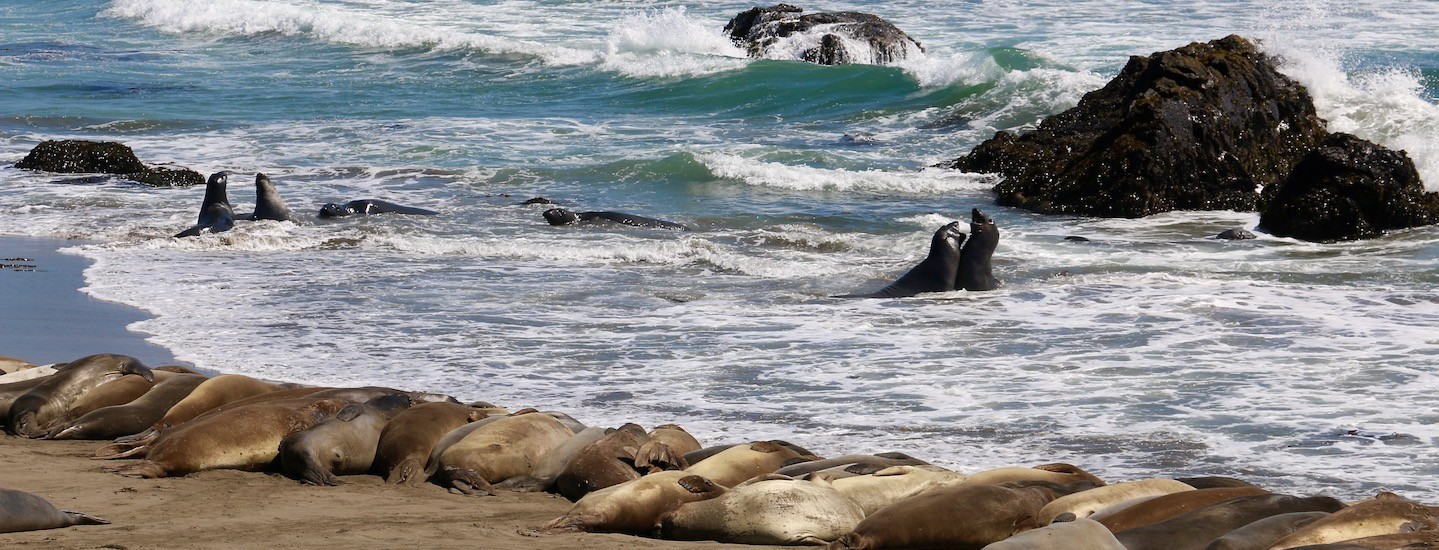
05.30.18
How Technology Helps Protect and Study California's Most Critical Ocean Places
By Surfrider Humboldt“What are we trying to get out of a marine protected area?”
That was the question Scripps Institution of Oceanography Director Margaret Leinen posed during her welcoming remarks at the May 16 California Marine Protected Area Technology Workshop hosted by Scripps and the California Marine Sanctuary Foundation. Answers, she continued, range from protecting ecosystems to national security, promoting ecotourism to replenishing fish stocks. But those answers in turn spark a new round of questions. Primarily, how do we measure success, in whichever context, when evaluating if we’re getting what we’re hoping for out of MPAs?
Workshop participants had come together from across the state and beyond to discuss emerging tools and technologies to enhance monitoring and management of the state’s landmark marine protected area network and get a glimpse of the future. (Surfrider Foundation played a critical role in developing California's network of marine protected areas and continues promoting the best enforcement, outreach and education to ensure its success.)
Not only does California boast the only MPA network in the US, the state also leads the world in research to develop new technologies, Leinen said. In fact, despite persistent budget shortfalls, “We are sitting in the most advantageous position in the world,” she said. “It doesn’t get any better than California.”
Keynote speaker Greg Stone, senior science advisor to the Special Envoy for the Ocean and the World Economic Forum Ocean Program, emphasized that the answer to the future lies in the ocean – and more specifically, in tech. “Technology can be a cost-effective way get better results by turning drudgery tasks over to robots and freeing up humans to do important stuff,” he said.
The next several presentations exemplified that concept. David Baisch from the University of Washington highlighted the need for “tools regular people can use” and explained how new, easily portable DNA Barcode Scanners can help law enforcement officers in the field to identify species of sea life, which would lead to more convictions for illegal harvest of prohibited species and, hopefully, deter would-be poachers. Zack Gold from the University of California Los Angeles spoke about using “environmental” DNA (also known as eDNA) monitoring to sample species abundance from a liter sample of seawater.
Marine Applied Research and Exploration (MARE) Chief Data Scientist Lindy Rauchenstein pointed out that 65 percent of MPAs lie in waters greater than 20 meters deep, necessitating better equipment for effective observations. MARE’s remotely operated vehicles (ROVs) can scoot along a mere 80 centimeters above the ocean floor, allowing an exponential expansion in the amount of deep water ocean data that can be gathered.
Panel moderator Samantha Murray, executive director of Scripp’s Master of Advanced Studies in Marine Biodiversity and Conservation noted that the last decade of California MPA management has been “phenomenal,” citing the adoption of a master plan, the formation of a statewide leadership team and the effectiveness of the MPA Collaborative Network, a collection of local stakeholder groups working to effectively steward MPAs. The technology being presented in the workshop, Murray said, “will be helpful in making all this even better.”
In a presentation eliciting audible approval from the audience, Dr. Melissa Garren of Pelagic Data Systems showed new ways to monitor vessels that could distinguish between transit and fishing, reveal illegal activities and be used to inform rights-based management internationally. Other speakers showcased innovative uses of existing technologies such as shore based radar systems and satellite imagery and shared forms of unmanned technologies that can assist not only in research and enforcement, but also in emergency response, and marine debris clean-up and species observations in remote areas.
Closing out the morning session, Kaitilin Gaffney, director for the ocean, coasts and fisheries program at Resource Legacy Fund, described the pace of technology since California’s MPAs were adopted in 1999 as “almost inconceivable.” The utility of a tool, she continued, “is not just dependent on the cleverness of the design, but on the capacity of the user,” and noted the new technologies displayed at the workshop could enhance the capacity of state and federal agencies to respond to real management needs.
Gaffney wrapped up the first part of the day with a quote by President John F Kennedy making the case for the human connection to the ocean: “And it is an interesting biological fact that all of us have in our veins the exact same percentage of salt in our blood that exists in the ocean, and, therefore, we have salt in our blood, in our sweat, in our tears. We are tied to the ocean. And when we go back to the sea, whether it is to sail or to watch it, we are going back from whence we came.”
Further resources:
Read more about the different types of marine protected areas.
Enjoy amazing videos from California’s most special coastal places – our MPAs!
Find an MPA Collaborative near you!
California MPAs
California Department of Fish & Wildlife
